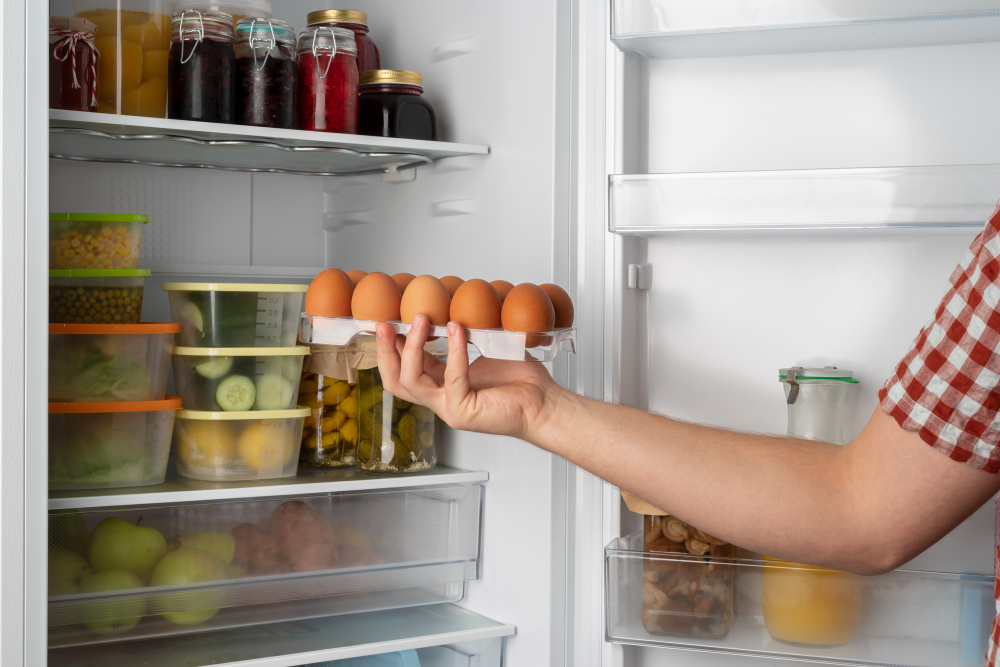Tips for How to Organize Your Refrigerator Like a Pro

Keeping your kitchen clean and efficient starts with one often overlooked space: your refrigerator. Whether you're living in apartments for rent in Fort Myers, FL, or elsewhere, an organized fridge doesn’t just make your life easier—it can also help reduce food waste and save money.
If you’ve struggled with finding that jar of pickles hidden in the back or noticed your veggies spoiling too quickly, you’re in the right place. This guide will give you ten practical tips for organizing your fridge so it works for you, not against you.
Why Organizing Your Fridge Matters
Before we get into the “how,” here's a quick look at why an organized fridge should be at the top of your to-do list:
- Minimizes Food Waste: When everything’s visible and accessible, you’re less likely to forget about items that expire quickly.
- Saves Money: Knowing what’s in your fridge means avoiding unnecessary grocery purchases.
- Improves Hygiene: A clean, well-organized fridge significantly reduces the chances of cross-contamination and foodborne illnesses.
- Streamlines Meal Prep: No more wasting time searching for ingredients at the back of the fridge.
Now, let's bring order to your fridge with these simple yet effective tips.
1. Start with a Clean Slate
The first step to an organized fridge is cleaning it out. Remove everything, toss expired or spoiled food, and wipe down all surfaces with a mix of warm water and mild dish soap.
Wrap up this cleaning phase by removing any lingering odors with baking soda or activated charcoal. This will ensure your newly organized fridge stays fresh and inviting.
2. Categorize Your Items
Place similar items together to make everything easy to find.
- Condiments in one section
- Proteins and Dairy grouped together
- Fruits and Veggies in their respective drawers
- Snacks like yogurt or cheese sticks in a designated area
Creating categories ensures you always know where to find (and put away) everything.
3. Understand the Zones of Your Fridge
Your fridge has different cooling zones, and understanding this can help you store your items more efficiently. Here’s a breakdown of where things should go:
- Top Shelf (consistent temperature): Store ready-to-eat items like leftovers or beverages.
- Middle Shelf (cold but not freezing): Ideal for eggs, dairy, and deli meats.
- Lower Shelf (coldest area): Perfect spot for raw meat in a leak-proof container to avoid contamination.
- Crisper Drawers (humidity-controlled): Use one drawer for fruits and another for vegetables for longer freshness.
- Fridge Door (warmest spot): Store condiments, drink bottles, and other non-perishable items.
4. Invest in Clear Storage Containers
Transparent bins can be a game-changer for organizing your fridge. They help corral loose items like cheese sticks or lunch meats and make it easier to pull out everything you need at once, especially useful when you're meal prepping.
Pro tip: Use stackable containers to maximize vertical space!
5. Label, Label, Label
Labels aren’t just for aesthetics. Slap some sticky labels on your bins or shelves to help everyone in your house know where things belong. You can go for reusable chalkboard labels or simple masking tape and a marker. Keeping "snacks," "fresh produce," and "meat" bins labeled makes maintaining order much easier.
6. Rotate Older Items to the Front
Adopt the "First in, First Out" (FIFO) method. When placing newer groceries in your fridge, push older items to the front as a reminder to use them first. This technique helps you minimize food waste while saving money on groceries.
7. Store Foods at the Correct Temperature
Your refrigerator should be set at 37°F (3°C) to keep perishable items fresh. Use a refrigerator thermometer to check if your appliance’s internal temperature is truly accurate.
Remember, an optimal temperature not only extends food longevity but also keeps energy costs down in those hot Fort Myers, FL, summers.
8. Keep a "Use-Me-Now" Box
Create a designated area for food items that need to be consumed soon. A simple labeled bin can work wonders for encouraging you (and your family) to finish those half-eaten yogurts or that avocado ripening a little too quickly.
9. Limit Clutter on the Doors
While fridge doors seem like an easy storage option, keep them uncluttered. The constant temperature changes every time the door is opened can spoil sensitive ingredients. Reserve this area for condiments, sauces, and drinks rather than dairy or eggs.
10. Set a Monthly Fridge Reset
Finally, make fridge organization a habit. Set a reminder to clean and reset your fridge every month. Regular maintenance ensures long-term cleanliness and saves you the headache of dealing with an overcrowded, chaotic fridge later.
Bonus Tip for Those Moving to a New Place
Living in a new apartment and don't know where to start with organizing your fridge? Focus on stocking the essentials first (dairy, fresh produce, eggs, and condiments). Building your fridge inventory gradually prevents it from becoming cluttered after the move.
Your Fridge, Your Sanctuary
An organized fridge isn’t just about aesthetics; it’s about creating a space that saves you time, money, and stress. By incorporating these practical tips into your routine, you’ll go from fridge chaos to culinary order in no time.
And if you’re looking for a fresh start in a beautiful new kitchen, complete with updated appliances, we’d love to welcome you to The Robert Apartments. Conveniently located in Fort Myers, FL, our vibrant community offers spacious kitchens and modern amenities to make organizing your fridge (and entire home) a breeze.
Schedule a tour of The Robert Apartments today to see our apartments for rent in Fort Myers, FL.